Disclosure: FMB Home Picks is committed to delivering independent advice and reviews on home products and services. When you purchase through links on our site, we may earn an affiliate commission. Learn more Contact us.
We’ve researched the latest windows prices, spending many hours meeting suppliers, looking at frame materials and styles and comparing costs, to provide an up-to-date guide.
White unplasticised polyvinyl chloride (uPVC) casements are the most economical material, and the average cost of replacing windows with this material is around £4,000. However, you can save up to £235 on your annual heating bills by swapping older windows for new double glazing.
With various replacement double glazing windows options available, it’s never been easier to find a balance between quality and affordability. To help you find the best deals, our experts consider the various factors that influence window prices and offer essential insights.
At the Federation of Master Builders, we excel at providing accurate and up-to-date window prices. Our expertise stems from extensive research and meticulous reviews of market trends, supplier pricing and consumer feedback. Our team has years of industry experience, allowing us to provide in-depth knowledge of window types, materials and installation processes. Trusted by consumers for transparency and reliability, we empower homeowners by giving them everything they need to make informed decisions.
Since uPVC casement windows have low-cost materials and are mass produced on a large scale, they are the cheapest frames on the market. Bear in mind, though, that while wooden frames have the highest initial cost, timber windows can last at least twice as long as uPVC windows (if not longer), so they are a cost-effective option if you plan to stay in your property for over 25 years.
However, with timber frames, you should budget for regular maintenance, while uPVC and aluminium require minimal care.
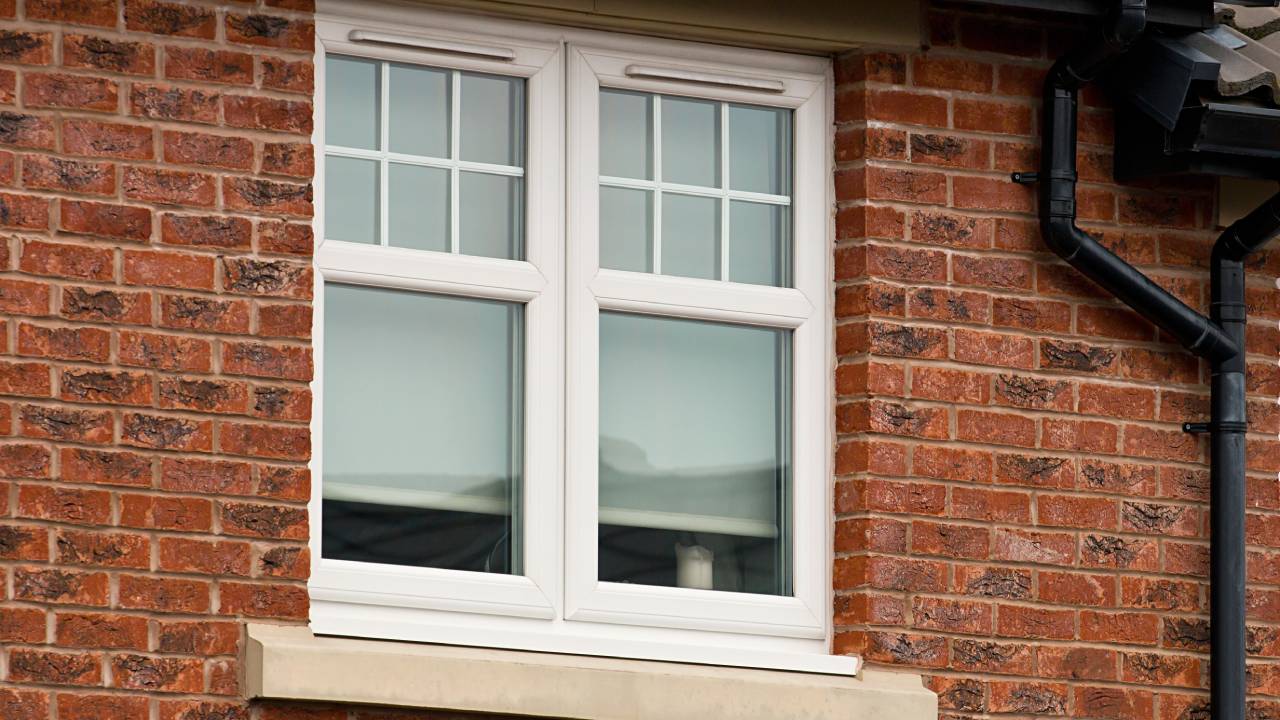
White uPVC windows are a popular and cost-effective choice, with prices starting at £500 per casement frame. uPVC frames are also available in a variety of colours, finishes and styles, making it easy to find a design that complements your property.
uPVC frames can lower energy bills and increase comfort, thanks to their good level of insulation, which reduces heat loss in the winter and heat gain in the summer. They are also low-maintenance – just wipe them occasionally with soap and water. These frames are resistant to moisture, rot and UV damage, so they will not warp, crack or fade during their 25-year-plus lifetime.
| Casement window frame material | 600mm x 900mm | 900mm x 1,200mm | 1,200mm x 1,200mm |
|---|---|---|---|
| uPVC | £500 | £580 | £620 |

Aluminium windows start at £1,000, making them more expensive than uPVC, but they are usually more affordable than high-end materials, such as timber.
With a high strength-to-weight ratio, aluminium allows for slim frames without compromising on structural integrity, meaning more natural light can filter through the larger glass areas. Like uPVC, aluminium requires minimal maintenance and is resistant to rusting and warping, so it typically lasts for around 45 years.
However, there is a significant drawback to aluminium frames: They are less energy-efficient than uPVC or timber. As a thermal conductor, aluminium frames can potentially increase energy bills and lead to less comfortable interior spaces. To mitigate this problem and improve insulation, manufacturers often add thermal breaks (materials that reduce heat transfer) into aluminium window frames.
| Casement window frame material | 600mm x 900mm | 900mm x 1,200mm | 1,200mm x 1,200mm |
|---|---|---|---|
| Aluminium | £1,000 | £1,150 | £1,250 |
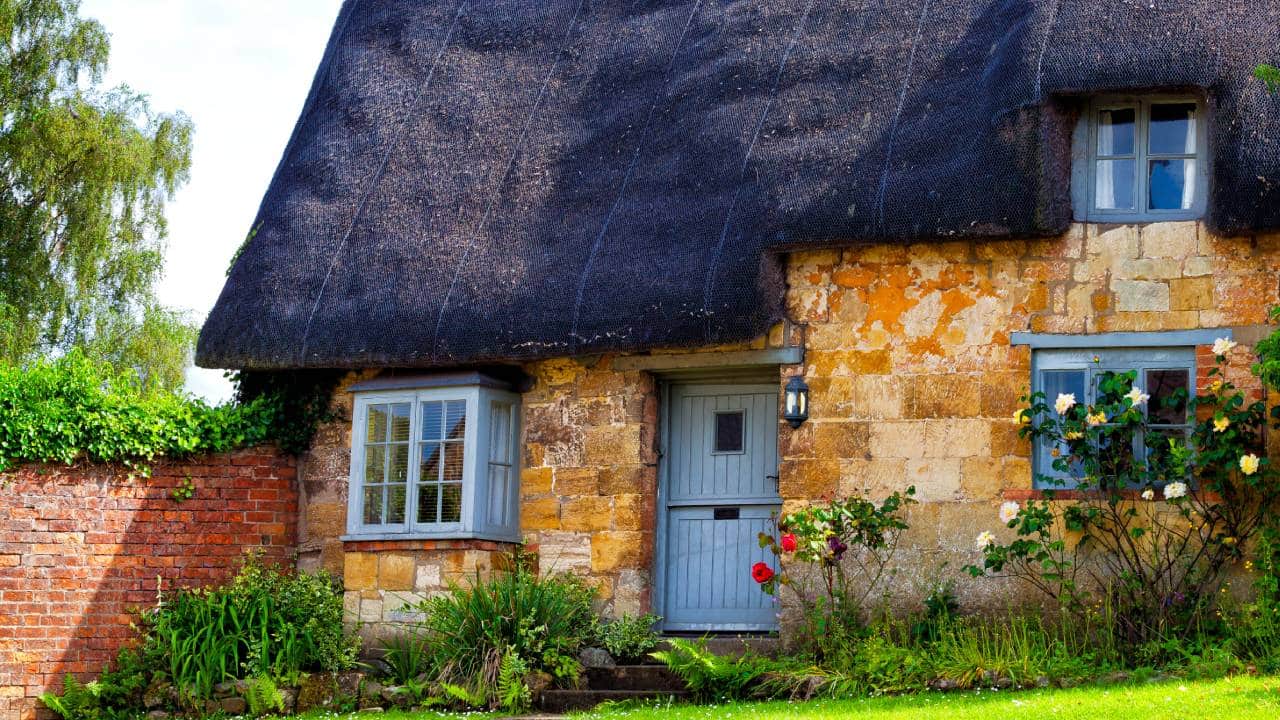
Starting at around £1,500 per frame, timber frames are the most expensive option, so they may be too costly for those on a tight budget. The cost can also increase over time, as compared to uPVC or aluminium, timber frames require more regular maintenance, such as oiling or repainting.
Although wooden windows cost more upfront, they do provide better thermal insulation and durability, and they can also enhance the appearance of properties, especially period homes. So, depending on the property and the homeowner’s long-term plans, investing in timber window frames may pay off over time, despite the high upfront costs.
| Casement window frame material | 600mm x 900mm | 900mm x 1,200mm | 1,200mm x 1,200mm |
|---|---|---|---|
| Timber | £1,500 | £1,700 | £1,850 |

Time and weather can cause wooden window frames to deteriorate. To keep them in good condition, you will need to repair, repaint or revarnish them every 1 to 5 years, depending on the type of wood. If you’re confident with DIY projects, you can fix wooden frames yourself for around £100, and the process should take 2 to 6 hours per window.
Therefore, taking longevity and maintenance into consideration, the average annual cost for wooden windows is only £160 more than for uPVC windows.
Different window styles suit different architectural designs, personal preferences and functional requirements. Casement windows are affordable, functional and versatile, so many homeowners prefer them, but these windows are not suitable for every property. For example, bay window styles often suit cottages, while sash windows are more in keeping with Edwardian or Georgian properties.
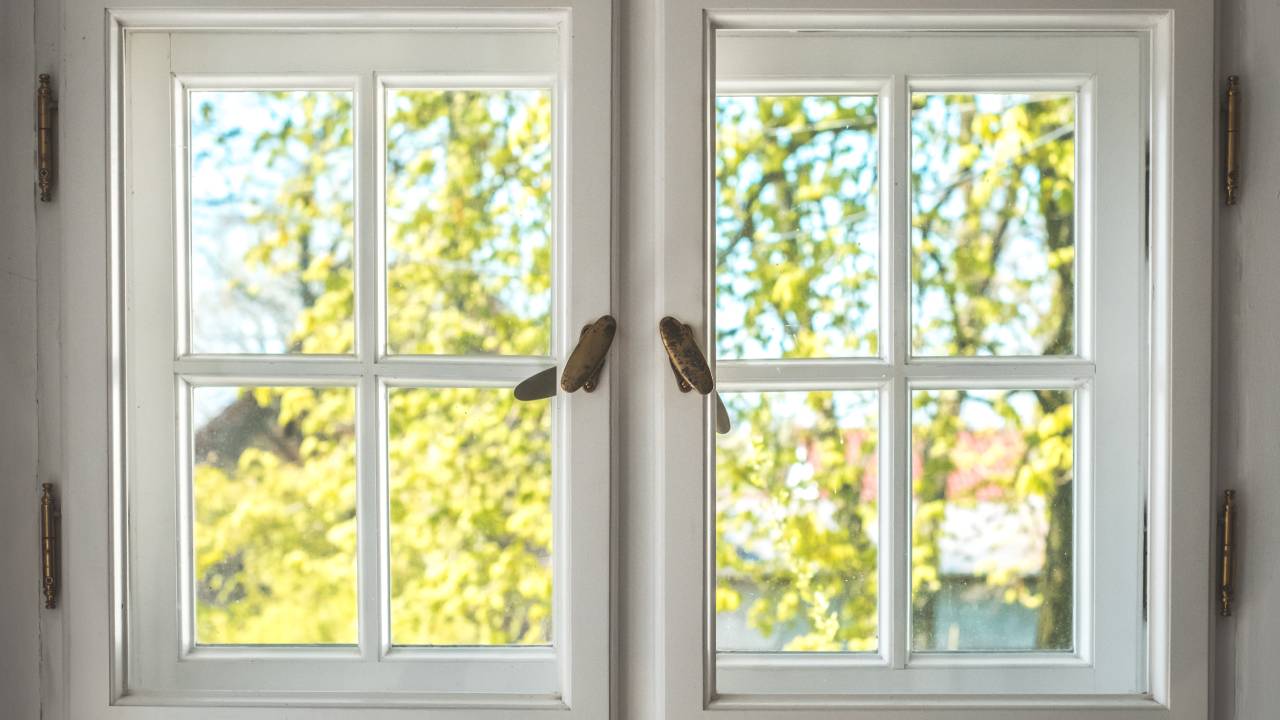
Hinged on one side, a casement window opens outwards using a crank or lever. These windows are popular in most UK homes, as they are versatile, easy to use and they provide excellent ventilation. Also, with no central rail, casement windows offer an unobstructed view, and when closed, they create a tight seal, improving security and energy efficiency.
uPVC is the standard option for casement windows, but this style also comes in aluminium or timber, and the windows are customisable with various finishes, colours and hardware. Many designs incorporate internal bars, giving the impression of individual glass panes or small vent windows, and these windows can also accommodate additional tailored options, such as stained glass.
However, bear in mind that casement windows may not be suitable for all situations, such as spaces where outward-opening windows would cause an obstruction or pose a safety hazard.
| Casement window frame material | 600mm x 900mm | 900mm x 1,200mm | 1,200mm x 1,200mm |
|---|---|---|---|
| uPVC | £500 | £580 | £620 |
| Aluminium | £1,000 | £1,150 | £1,250 |
| Timber | £1,500 | £1,700 | £1,850 |
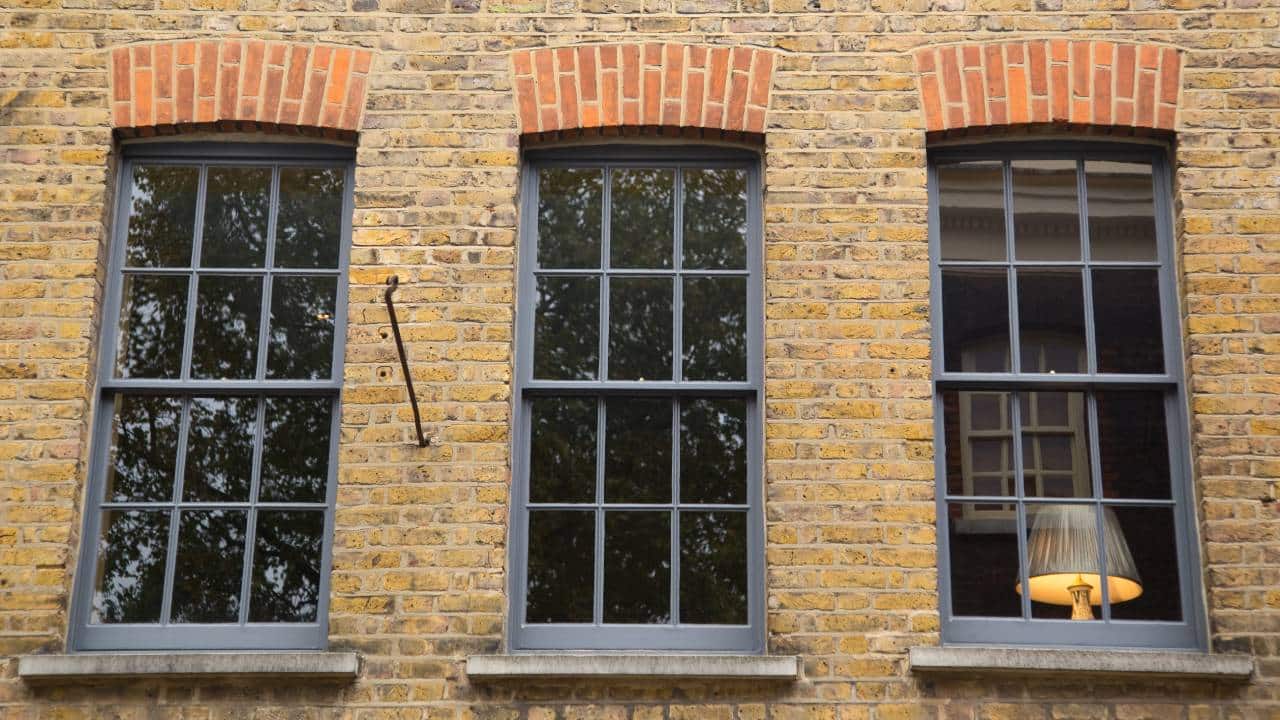
Sash windows, sometimes called hung sash or sliding windows, originated in the late 17th century. To allow for easy opening and closing, they consist of one or more movable panels called sashes that slide vertically using counterweights (in single-hung or double-hung sash windows) or horizontally within the window frame (in sliding sash windows).
Sash windows, common in Georgian, Victorian, and Edwardian-style buildings, look elegant and timeless. The modern double glazed versions are energy-efficient and easy to maintain, making them popular for traditional and contemporary homes. The number of panes in a historic sash window will generally depend on the property’s construction date; for example, Georgian homes typically feature a ‘6-over-6’ configuration, while Victorian terraces usually have ‘1-over-1’ sash designs.
Sash windows are available in both uPVC and timber, and they come in various colours.
| Sash window frame material | 600mm x 900mm | 900mm x 1,200mm |
|---|---|---|
| uPVC | £500 | £580 |
| Timber | £1,500 | £1,700 |

Projecting outwards from the house, bay windows form a recess or ‘bay’ in the interior space. This design expands the view from the window and allows more natural light to enter the room. Due to their look and functionality, these windows are popular in residential properties.
Bay windows typically consist of three or more windows joined at an angle to create a polygonal shape. Usually larger, the central window is parallel to the main wall of the building. Meanwhile, the side windows, called flankers, are at various angles, such as 30, 45 or 90 degrees, depending on the desired effect and architectural style.
Double glazed bay windows come in a variety of styles, configurations and materials, but the most popular are timber, uPVC and aluminium. There are no standard sizes for bay windows, but prices are typically based on casement styles, with an additional £75 per panel to cover the connecting struts. The table below provides a guideline.
| Bay window frame material | 1,016mm x 914mm | 3,200mm x 1,980mm |
|---|---|---|
| uPVC | £1,700 | £2,800 |
| Aluminium | £3,400 | £5,600 |
| Timber | £5,100 | £8,400 |
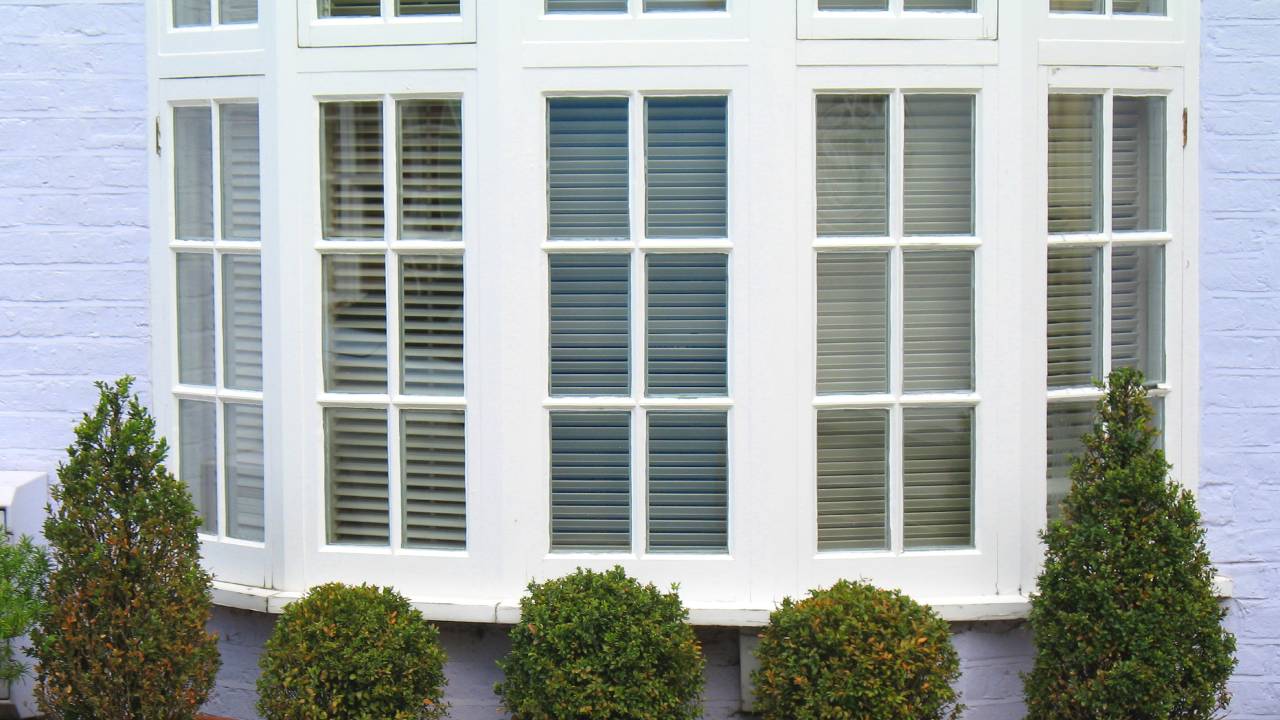
Bow windows are similar to bay windows, as they project outwards from the main wall of a home, creating additional interior space and allowing in more natural light. The primary difference between bow and bay windows lies in their shape and configuration.
As the name suggests, a bow window typically consists of four or more windows that form an arc. This design creates a rounded appearance on the exterior of the building and a curved nook or alcove inside. The individual panels in these windows are usually the same size and are either fixed or openable – if fitted with casement or double-hung windows.
Since installers make bow windows to your requirements, these windows do not come in standard sizes. The number of casement panels will affect the cost, which will include an additional £75 per panel to cover the connecting struts and poles. The table below provides a guideline.
| Bow window frame material | 1,016mm x 914mm | 3,200mm x 1,980mm |
|---|---|---|
| uPVC | £1,700 | £2,800 |
| Aluminium | £3,400 | £5,600 |
| Timber | £5,100 | £8,400 |
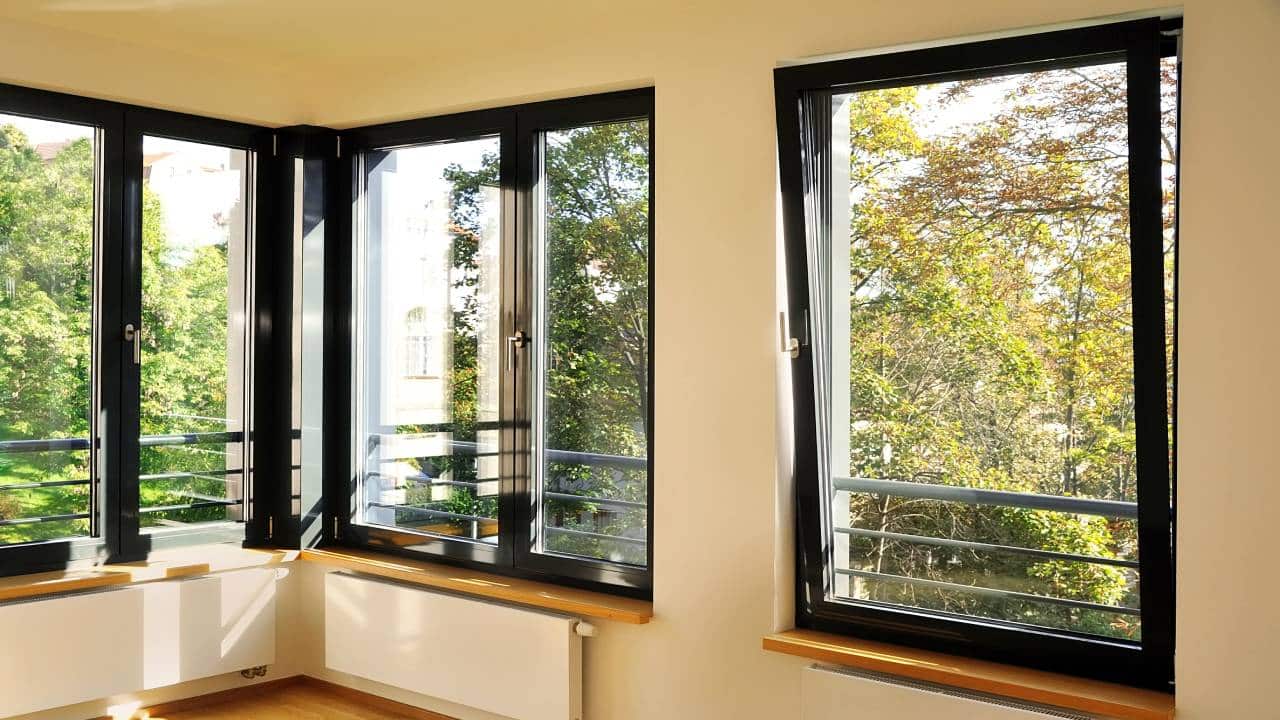
Tilt and turn windows are versatile and have a modern appearance, making them increasingly popular across the UK. Their hinge system allows them to tilt inwards and pivot from the frame’s top, middle or bottom, or they can swing open like a regular casement window. The former option doesn’t compromise security, and it is especially useful for homes with young children.
Double glazed tilt and turn windows are energy-efficient and low-maintenance. Also, since they come in various materials, including uPVC, aluminium and timber, they are ideal for both residential and commercial buildings.
| Tilt and turn window frame material | 800mm x 800mm | 1,000mm x 1,000mm | 1,200mm x 1,200mm |
|---|---|---|---|
| uPVC | £600 | £695 | £750 |
Double, triple and secondary glazing each have specific advantages and disadvantages, so your choice will depend on your budget and goals.
Double glazing is a sealed unit consisting of two panes of glass with a space between them that’s typically filled with an inert gas, such as argon. This gap creates an insulating barrier to reduce heat transfer and sound transmission. Double glazing offers homeowners many advantages.
According to our survey, 25 per cent of homeowners who are considering installing double glazing throughout their property in the next year expect to pay between £3,000 and £4,000. Another 25 per cent are preparing to replace their defective windows for between £1,000 and £2,000, while almost 13 per cent plan to spend over £5,000.
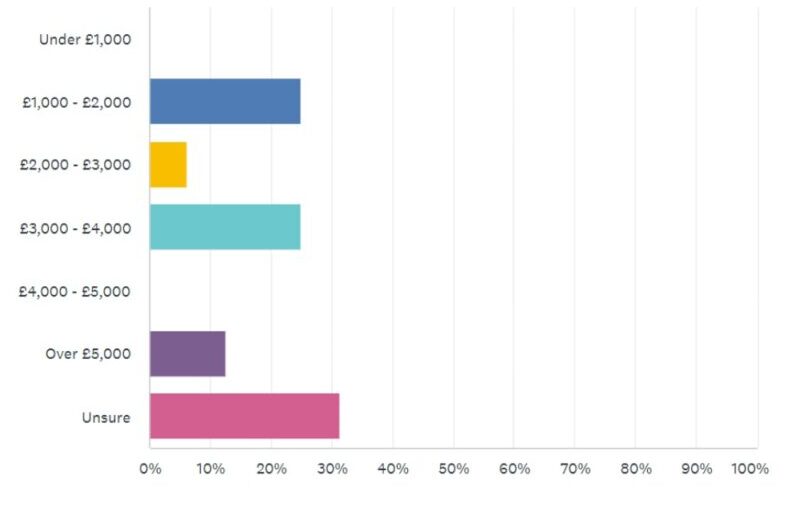
Triple glazing uses three panes of glass within a window unit, which vastly improves a window’s insulation properties, trapping more heat inside and keeping the cold out.
This type of glazing is particularly beneficial in cold climates, such as the Baltic states, where retaining heat is crucial. But, thanks to the UK Government’s Future Home Standard project, triple glazed windows are now becoming more common in the UK. In 2025, it will become mandatory for new builds to produce 75-80 per cent fewer carbon emissions than homes built under the current regulations, and this could include installing triple glazing as an energy-efficiency measure.
For homeowners, triple glazed windows offer several advantages over double glazing.
All that said, there are a few drawbacks to triple glazing.
Secondary glazing attaches a separate pane of glass or plastic to the inside of an existing window frame, using a magnetic strip with an air gap between the original window and the secondary glazing. This approach is beneficial for listed buildings or those within conservation areas, which may restrict alterations to the property’s external appearance.
Although secondary glazing is less efficient than double glazing, it still improves thermal insulation and noise reduction, and it also has other advantages.
If you’re thinking about installing secondary glazing, there are also some disadvantages to consider.
There are several factors to consider when evaluating the cost of new or replacement windows for your home. Start by assessing your building’s needs, such as the level of insulation, noise reduction and security. You should also consider the type of window frames and glazing that best suit the style of your home and your personal preferences.
To find the best double glazing companies, research a variety of manufacturers and suppliers. Focus on companies with good reviews, certifications (namely, FENSA) and warranties to ensure you’re getting a high-quality product. To get the best value from your investment, compare quotes from multiple sources rather than simply accepting the cheapest quote. Resist feeling pressured to commit to a quote based on ‘on-the-day’ prices.
The type of glass used in double glazed windows can also affect their performance, so look for windows with low-emissivity (Low-E) glass. This has a special coating to help reduce heat transfer and improve energy efficiency. Also consider the gas (argon, krypton or xenon) used to fill the space between the panes – argon is the most common and affordable choice. The window’s energy-efficiency rating is also important, and you can find this on a label or in the product specifications.
As well as the actual windows, the quality of the installation is vital. Poor installation can cancel out the benefits of high-quality windows, so it’s crucial to hire an experienced and reputable company that will do the job correctly. Read online reviews and ask your friends, family or neighbours for recommendations.
Finally, ensure you choose windows that meet local building regulations or requirements, particularly if you live in an historic building or Conservation Area. Before proceeding with the installation, you may need to get permission from your local authority.

Replacing windows in heritage or listed properties comes with a unique set of challenges and extra costs. Such properties have historical significance, so any renovations must preserve their character and appearance. Given the need for permissions, architects and specialist handiwork, the cost of replacing windows in listed properties can be significantly higher.
You must get the necessary permissions from your local planning authority before undertaking any work. For any changes that might affect the aesthetic of a listed property or a building of particular architectural or historic interest, you will need to obtain listed building consent. Your local authority will cover the cost of this, but before applying, you should look into a few things.
In cases of irreparable damage, such as extensive rot or decay, restoration may be impractical. Under such circumstances, it might be easier to get permission to replace windows. Also, if previous replacement windows compromised the property’s authenticity by using incorrect materials or designs, then a proposal to return to the original style of windows can also serve as a legitimate basis for replacement.
Local authorities typically try to decide on small projects within two months, while it may take up to 13 weeks to process more significant projects.
Although homeowners can design and submit their own detailed drawings to the planning department, most will hire a professional architect. This can cost between £900 and £1,500, and there may be additional costs.
Quotes for double glazing should be comprehensive and easy to understand, with a detailed breakdown of the costs and services involved, including those listed below.
Before moving forward with a quote, review it carefully and ask questions about anything that’s unclear. It’s also a good idea to get multiple quotes from various suppliers and installers to ensure you get the best value for your investment.

Richard Tincknell has been with the Britannia Group for over 30 years. He states that less trustworthy double glazing companies sometimes advertise impossibly low prices on their websites to attract customers, while other companies offer time-limited deals to pressure people into signing.
Credible installers should be keen to avoid the image of a pushy salesperson. Tincknell explains that customers should have a good experience from the initial contact to the finished installation.
Advanced computer software allows customers to see how a particular window will look in their home, ensuring they are happy with the design and with their quote. The choice of frame materials, style, colour and window furniture impacts the final price, so this technology lets customers easily adjust their order according to their preferences and budgets.
To know when to replace your double glazed windows, you should consider several key factors.

To ensure a proper fit and prevent installation issues, accurate measuring is crucial when planning new or replacement windows. Always measure the aperture – the opening in the wall for the window – rather than the window itself. Where possible, do this on the outside of the building.

To ensure accuracy, always remember to double-check your measurements. Consult a professional window installer if you’re unsure of your measurements or how to approach the process. Professional installers will usually check your measurements before confirming a quote, and they will conduct an on-site visit before they begin the installation.
To write this article, our expert researchers used a comprehensive and rigorous process, ensuring accuracy by drawing on credible, authoritative sources. We spent over 200 hours on research and analysis to help you make an informed decision regarding window prices.
Window prices are forecast to rise throughout 2024. There has been an increase in new window costs in recent years, mostly due to material prices, and in February 2024 an energy surcharge was imposed on glass, meaning an additional charge of 17p per kilo for every unit of glass purchased. However, supply chain issues and labour costs also play a role.
Labour costs in the home improvement sector are predicted to rise steadily until 2027. The UK Trade Skills Index predicts a demand for over 937,000 new workers in the construction and trades industry over the next decade. This surge in demand coincides with a decreasing pool of skilled workers from the EU, an effect attributed to Brexit. Therefore, those planning renovations should prioritise window installations and avoid rising prices.
Investing in expensive windows can be worth it, as long as the benefits align with your needs and priorities – but you should always balance these factors with your budget and compare different quotes and options.
Expensive windows can be more energy-efficient, which helps to reduce your heating and cooling costs. High-quality windows typically include triple glazing, low-E coatings and gas-filled spaces between panes, all of which help prevent heat transfer; they can also offer better noise insulation. More expensive windows are often available in a wider variety of styles, colours and materials, so you can choose a design that complements your home’s architecture and your preferences.
Although there are currently no windows grants in the UK, you could qualify for funding through various programmes aimed at improving energy efficiency and reducing household heating costs. These include the ECO4 grant (which offers financial support to eligible low-income households and can provide free double glazing), the Home Upgrade Scheme and the Home Energy Scotland Grant and Loan Scheme.
By replacing 20-year-old windows, you can significantly improve your home’s energy efficiency and decrease your heating bills. Modern windows offer better insulation, which reduces draughts and noise, and they can enhance your home’s appearance and resale value. New windows often have advanced features, such as UV protection and upgraded security.
With the potential energy savings and improved comfort, replacing old windows is a worthwhile investment for many homeowners.
The windows scrappage scheme is a recycling initiative offered by some window installers. It provides financial incentives and discounts to encourage homeowners to replace old, inefficient windows with modern, energy-efficient versions. For example, Anglian offers an average of £1,000 off its new windows when you recycle your old ones.
When you replace all your windows at the same time, installers can usually complete the job in a single visit, minimising disruptions and maximising efficiency. You may also qualify for bulk discounts from your supplier.
However, if you are on a tight budget, then you might want to consider replacing only certain windows, such as those that face the street. Since these windows often have more exposure to wear and tear, upgrading them may provide the most benefit in terms of improved energy efficiency and noise reduction.
By addressing the most critical areas first, you can balance immediate cost savings with the need for overall home improvement.